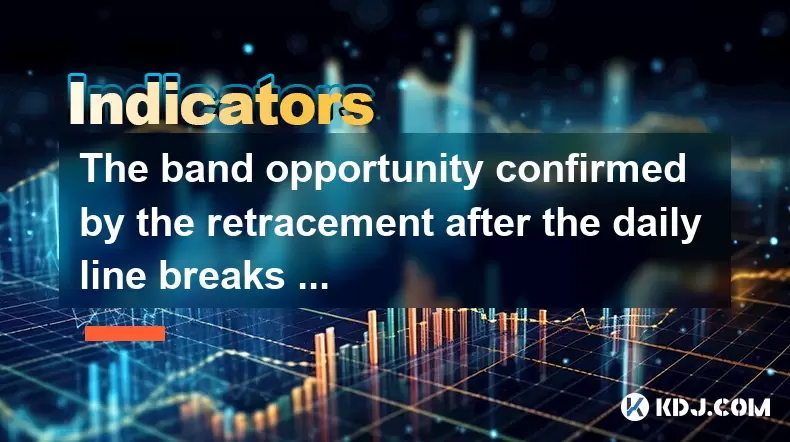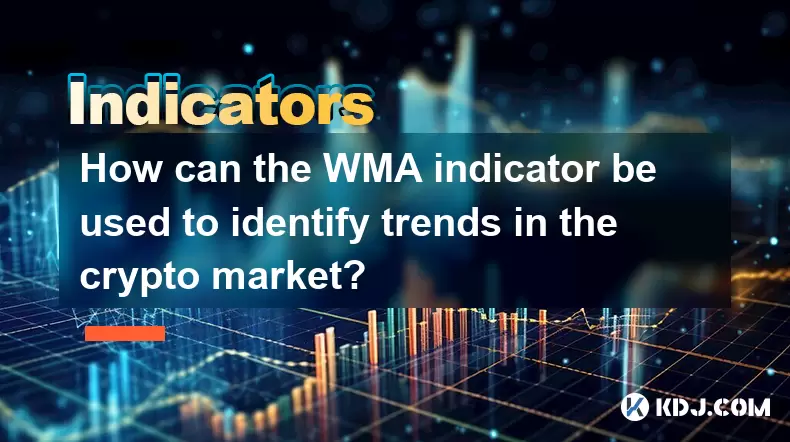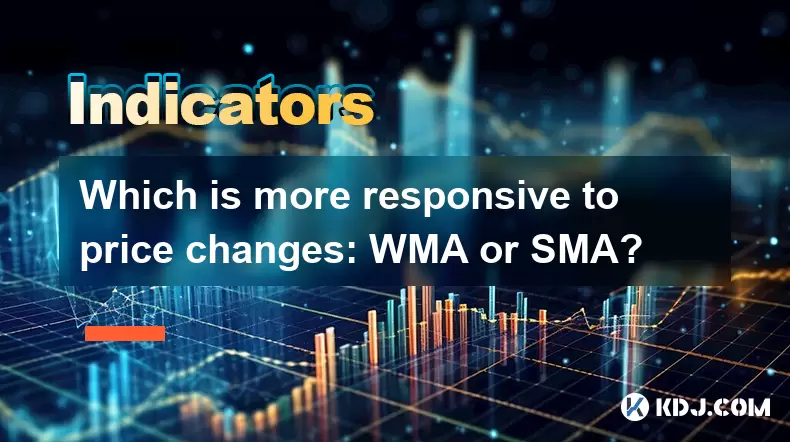-
 Bitcoin
Bitcoin $118300
-0.58% -
 Ethereum
Ethereum $3825
0.11% -
 XRP
XRP $3.137
-0.71% -
 Tether USDt
Tether USDt $0.9999
-0.01% -
 BNB
BNB $803.9
-3.37% -
 Solana
Solana $181.5
-1.94% -
 USDC
USDC $0.9999
0.01% -
 Dogecoin
Dogecoin $0.2238
-2.51% -
 TRON
TRON $0.3358
2.12% -
 Cardano
Cardano $0.7844
-2.16% -
 Hyperliquid
Hyperliquid $43.31
-1.48% -
 Sui
Sui $3.807
-4.04% -
 Stellar
Stellar $0.4203
-1.96% -
 Chainlink
Chainlink $17.79
-3.00% -
 Bitcoin Cash
Bitcoin Cash $567.8
-1.34% -
 Hedera
Hedera $0.2614
-4.30% -
 Avalanche
Avalanche $24.19
-4.46% -
 Litecoin
Litecoin $109.2
-0.74% -
 UNUS SED LEO
UNUS SED LEO $8.969
-0.01% -
 Toncoin
Toncoin $3.404
3.97% -
 Ethena USDe
Ethena USDe $1.001
-0.01% -
 Shiba Inu
Shiba Inu $0.00001307
-3.19% -
 Uniswap
Uniswap $10.33
-1.23% -
 Polkadot
Polkadot $3.884
-4.06% -
 Monero
Monero $312.9
-1.87% -
 Dai
Dai $1.000
0.01% -
 Bitget Token
Bitget Token $4.537
-2.24% -
 Pepe
Pepe $0.00001156
-3.40% -
 Cronos
Cronos $0.1437
-0.89% -
 Aave
Aave $282.8
-2.77%
The band opportunity confirmed by the retracement after the daily line breaks through the half-year line with three consecutive positives
A breakout above the 180-day MA, confirmed by three green candles and a retracement holding support, signals a high-probability bullish opportunity in crypto.
Jul 29, 2025 at 04:28 pm

Understanding Key Technical Indicators in Cryptocurrency Trading
In cryptocurrency trading, technical analysis plays a pivotal role in identifying potential price movements. The scenario described — "the band opportunity confirmed by the retracement after the daily line breaks through the half-year line with three consecutive positives" — involves several key technical concepts. To fully grasp this signal, traders must understand the meaning of the half-year line, daily line, retracement, and three consecutive positive candles. The half-year line typically refers to the 180-day moving average, a long-term support or resistance level widely monitored in crypto markets. When the daily closing price breaks above this line, it often signals a shift from bearish to bullish sentiment.
The three consecutive positive (green) candles on the daily chart confirm sustained buying pressure. This pattern suggests that buyers are in control and that the upward momentum is not a one-off spike. The combination of a moving average breakout and multiple bullish closes increases the reliability of the signal. Traders interpret this as a potential start of a new uptrend, especially if the volume during these candles is higher than average, indicating strong participation.
What Is a Retracement and Why It Matters
After a breakout above a major moving average like the 180-day, it’s common for the price to pull back slightly. This movement is known as a retracement. A retracement is not a reversal; instead, it reflects short-term profit-taking or hesitation among traders before the trend resumes. In this context, the retracement acts as a confirmation mechanism. If the price pulls back toward the 180-day moving average but finds support there — meaning it doesn’t close below it — the breakout gains credibility.
The significance of this retracement lies in its ability to filter out false breakouts. Many breakouts fail because they lack follow-through buying. However, when the price retests the former resistance (now support) and bounces, it confirms that market participants now view this level as a floor. In cryptocurrency markets, where volatility is high, such confirmation reduces the risk of entering a trade prematurely. The ideal retracement typically ranges between 38.2% and 61.8% of the initial move, based on Fibonacci retracement levels.
Identifying the Band Opportunity in Practice
The term "band opportunity" likely refers to a trading range or a volatility band formed around key moving averages. In this case, the opportunity arises when the price, after breaking the 180-day moving average and posting three green daily candles, retraces to test that level. At this juncture, traders look for specific signs to confirm the opportunity:
- Price holds above the 180-day MA during the retracement.
- Volume decreases during the pullback, indicating lack of strong selling pressure.
- Bullish candlestick patterns such as a hammer, bullish engulfing, or morning star appear near the support.
- RSI (Relative Strength Index) remains above 50, showing underlying strength.
When these conditions align, the band between the breakout point and the 180-day MA becomes a strategic zone for entry. Traders may place buy orders near the moving average with stop-losses just below it. The upper boundary of the band can serve as a take-profit target or a scaling-out point.
Step-by-Step Guide to Executing This Trade Setup
Executing this strategy requires precision and discipline. Below is a detailed walkthrough of the process:
- Verify the 180-day moving average on the daily chart of the cryptocurrency in question. Ensure it’s clearly defined and has acted as resistance prior to the breakout.
- Confirm three consecutive green daily candles immediately following the close above the 180-day MA. Each candle should ideally have strong volume and minimal upper wicks.
- Wait for the retracement to occur. Do not enter during the initial breakout; patience is critical.
- Monitor price action as it approaches the 180-day MA. Look for signs of support, such as tight candle bodies, long lower wicks, or reversal patterns.
- Enter a long position when a bullish confirmation candle closes above the MA after the test.
- Set a stop-loss just below the 180-day MA, allowing for minor volatility.
- Determine take-profit levels based on recent swing highs or Fibonacci extensions (e.g., 1.618x the retracement move).
Using a platform like TradingView or Binance’s advanced charting tools, traders can set price alerts on the 180-day MA and use conditional orders to automate entries and exits.
Common Mistakes and How to Avoid Them
Even with a well-defined setup, traders often make errors that undermine their success. One common mistake is entering before the retracement, assuming the breakout will continue uninterrupted. This leads to buying at the top of a short-term move and increases the risk of stop-outs during pullbacks. Another error is ignoring volume. A breakout without volume lacks conviction and is more likely to fail.
Failing to use a stop-loss is another critical oversight. Cryptocurrency markets can reverse sharply due to news or whale activity. Not adjusting position size according to volatility can also lead to outsized losses. Lastly, some traders misidentify the 180-day MA, especially if the chart scale or time zone is incorrect. Always double-check the moving average settings and ensure the chart reflects UTC or exchange-local time consistently.
Frequently Asked Questions
Can this strategy be applied to altcoins as well as Bitcoin?
Yes, this strategy is applicable to both Bitcoin and major altcoins like Ethereum, Binance Coin, or Solana. However, altcoins often exhibit higher volatility, so the retracement may be deeper, and false breakouts are more common. It’s essential to assess the asset’s historical behavior around the 180-day MA and ensure sufficient trading volume.
What if the price closes below the 180-day MA during the retracement?
A daily close below the 180-day MA invalidates the breakout confirmation. This suggests that the support has not flipped to resistance, and the bullish momentum may be weak. In such cases, traders should avoid entering long positions and consider the possibility of a continued downtrend or range-bound market.
How do I adjust this strategy for different timeframes?
While the setup is based on the daily chart, traders can use the 4-hour or 6-hour chart for finer entry timing during the retracement. On these lower timeframes, look for bullish divergence on RSI or MACD as additional confirmation. The core rules — breakout, three green candles, retracement to MA — remain unchanged.
Does this setup work during bear markets?
This pattern is less reliable in strong bear markets where long-term sentiment is overwhelmingly negative. Bear market rallies often mimic breakouts but fail to sustain. To improve accuracy, combine this signal with broader market indicators, such as Bitcoin dominance trends or on-chain data showing increased accumulation.
Disclaimer:info@kdj.com
The information provided is not trading advice. kdj.com does not assume any responsibility for any investments made based on the information provided in this article. Cryptocurrencies are highly volatile and it is highly recommended that you invest with caution after thorough research!
If you believe that the content used on this website infringes your copyright, please contact us immediately (info@kdj.com) and we will delete it promptly.
- Ozak AI Presale: Your Chance to Turn 1 ETH into 20? A Crypto Investment Deep Dive
- 2025-07-30 15:50:12
- IPO, Bitcoin, and Treasury: A New Era of Crypto Investment?
- 2025-07-30 14:30:12
- Bitcoin, Binance, and Whales: Decoding the Latest Market Moves
- 2025-07-30 14:50:12
- Bitcoin, Binance, and Whales: Decoding the $1.2B Shuffle
- 2025-07-30 16:10:12
- MultiBank Group's $MBG Token: Bridging TradFi and Web3 with LBank Listing
- 2025-07-30 16:10:12
- NFTs: Punks, Penguins, and the Market's Mosh Pit
- 2025-07-30 16:16:00
Related knowledge

What are the best WMA settings for day trading crypto?
Jul 30,2025 at 03:43pm
Understanding WMA in the Context of Crypto Day TradingThe Weighted Moving Average (WMA) is a technical indicator that assigns greater importance to re...

How can the WMA indicator be used to identify trends in the crypto market?
Jul 30,2025 at 04:56pm
Understanding the WMA Indicator in Cryptocurrency TradingThe Weighted Moving Average (WMA) is a technical analysis tool that assigns greater importanc...

What are the advantages of using the WMA indicator for crypto?
Jul 30,2025 at 03:21pm
Understanding the WMA Indicator in Cryptocurrency TradingThe Weighted Moving Average (WMA) is a technical analysis tool widely used in cryptocurrency ...

Which is more responsive to price changes: WMA or SMA?
Jul 30,2025 at 05:00pm
Understanding Weighted Moving Average (WMA)The Weighted Moving Average (WMA) assigns greater importance to recent price data, making it inherently mor...

What are the main differences between WMA, SMA, and EMA in crypto?
Jul 30,2025 at 02:50pm
Understanding the Role of Private Keys in Cryptocurrency WalletsEvery cryptocurrency wallet operates based on cryptographic principles, with the priva...

How is the WMA indicator calculated in cryptocurrency trading?
Jul 30,2025 at 02:35pm
Understanding the Weighted Moving Average (WMA) in Cryptocurrency TradingThe Weighted Moving Average (WMA) is a technical analysis tool widely used in...

What are the best WMA settings for day trading crypto?
Jul 30,2025 at 03:43pm
Understanding WMA in the Context of Crypto Day TradingThe Weighted Moving Average (WMA) is a technical indicator that assigns greater importance to re...

How can the WMA indicator be used to identify trends in the crypto market?
Jul 30,2025 at 04:56pm
Understanding the WMA Indicator in Cryptocurrency TradingThe Weighted Moving Average (WMA) is a technical analysis tool that assigns greater importanc...

What are the advantages of using the WMA indicator for crypto?
Jul 30,2025 at 03:21pm
Understanding the WMA Indicator in Cryptocurrency TradingThe Weighted Moving Average (WMA) is a technical analysis tool widely used in cryptocurrency ...

Which is more responsive to price changes: WMA or SMA?
Jul 30,2025 at 05:00pm
Understanding Weighted Moving Average (WMA)The Weighted Moving Average (WMA) assigns greater importance to recent price data, making it inherently mor...

What are the main differences between WMA, SMA, and EMA in crypto?
Jul 30,2025 at 02:50pm
Understanding the Role of Private Keys in Cryptocurrency WalletsEvery cryptocurrency wallet operates based on cryptographic principles, with the priva...

How is the WMA indicator calculated in cryptocurrency trading?
Jul 30,2025 at 02:35pm
Understanding the Weighted Moving Average (WMA) in Cryptocurrency TradingThe Weighted Moving Average (WMA) is a technical analysis tool widely used in...
See all articles

























































































